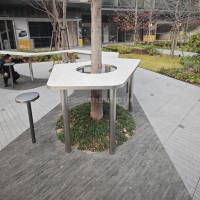Welcome to the website for landscape facilities products and knowledge.
How does concrete resist water penetration?
Concrete resists water penetration through a combination of its dense structure, chemical composition, and additional waterproofing measures. The primary resistance comes from the hydration process, where cement particles react with water to form a solid matrix with minimal pores. High-quality concrete has low permeability due to its tightly packed particles, reducing water infiltration.
Additives like fly ash or silica fume further enhance water resistance by filling microscopic gaps. Hydrophobic admixtures can also be mixed into concrete to repel water molecules. Proper curing ensures optimal hydration, strengthening the material's impermeability.
Surface treatments, such as sealants or membranes, provide an extra layer of protection against water ingress. These methods collectively make concrete highly resistant to water penetration, ensuring long-term durability in wet environments.
Related search:

Recommendation
An outdoor bar counter with stainless steel and terrazzo materials in an irregular shape